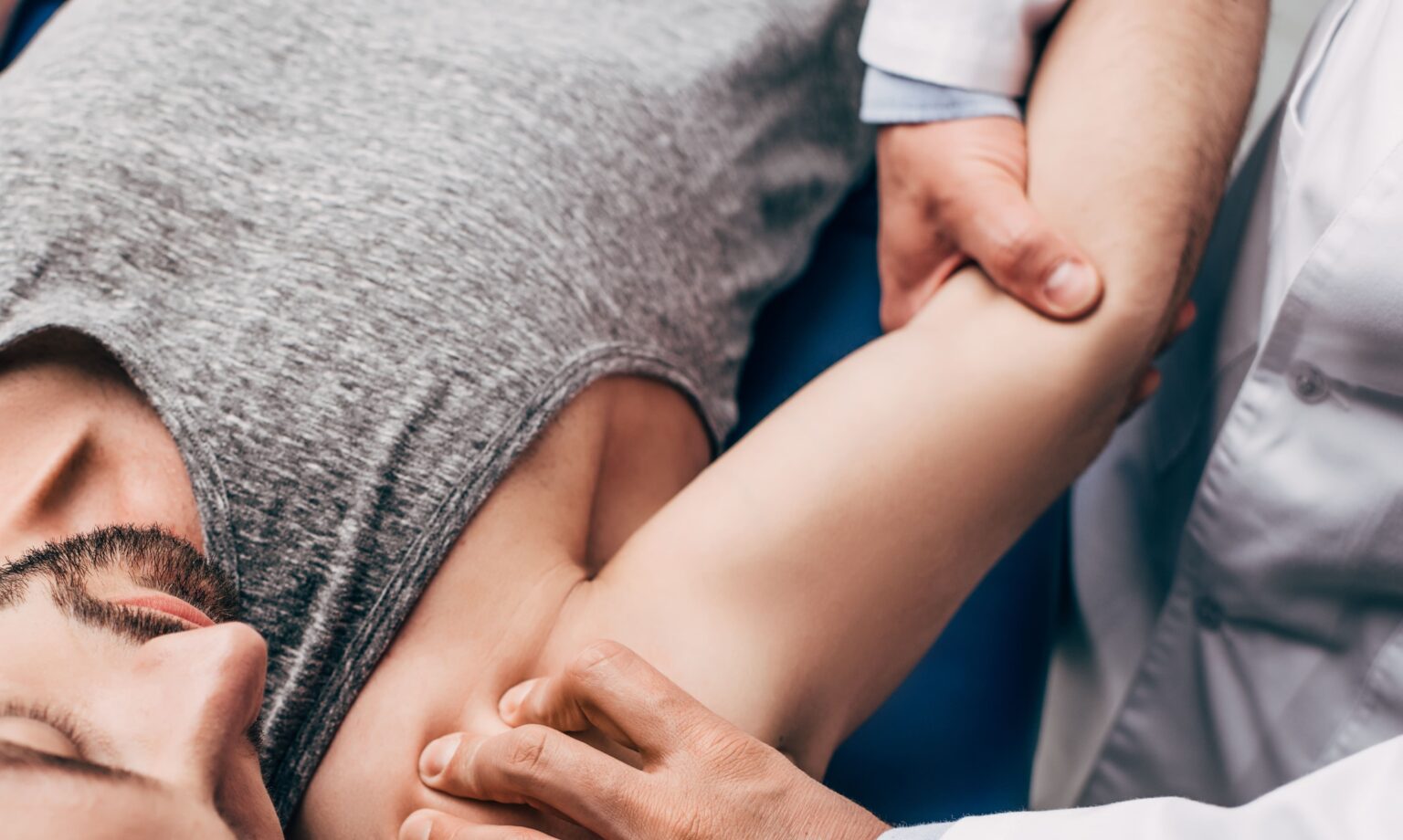SCHEDULE AN APPOINTMENT WITH US
Are Your Symptoms Affecting Your Quality Of Life?
Consult our MOH-accredited orthopaedic specialist for an accurate diagnosis & personalised treatment plan today.

MBBS (S’PORE)
MRCS (Ireland)
MMed (Ortho)
FRCSEd (Ortho)

Humeral intramedullary nailing is a surgical procedure to treat fractures of the humerus, the long bone in the upper arm.
This technique involves the insertion of a specially designed nail or rod into the central canal of the humerus. The nail, typically made of titanium or stainless steel, provides internal support and stabilises the bone as it heals.
Humeral intramedullary nailing is primarily indicated for treating certain types of fractures to the humerus where other methods may not be as effective. These indications include:
Proper preparation is crucial for the success of humeral intramedullary nailing. This preparation involves several steps, ensuring that the patient is ready for surgery and understands the procedure.


SCHEDULE AN APPOINTMENT WITH US
Consult our MOH-accredited orthopaedic specialist for an accurate diagnosis & personalised treatment plan today.
Humeral intramedullary nailing is a surgical procedure that requires careful execution. Understanding what happens during the surgery can help patients prepare mentally and have realistic expectations.

MBBS (S’pore)
MRCS (Ireland)
MMed (Ortho)
FRCSEd (Ortho)
Dr Kau (许医生) is a Fellowship trained Orthopaedic Surgeon with a subspecialty interest in Hip and Knee surgery and has been in practice for more than 15 years.
He is experienced in trauma and fracture management, sports injuries, and joint replacement surgery.
After undergoing humeral intramedullary nailing, the post-operative care and rehabilitation phase focuses on managing pain, preventing complications, and regaining function in the affected arm.
For Singaporeans, Singapore Permanent Residents and Foreigners.
Please speak to our friendly clinic staff about using your insurance plans.

If you have any enquiry, please do get in touch. Leave us a message and we will get back to you shortly.
The recovery period for humeral intramedullary nailing typically ranges from a few months to a year, depending on the complexity of the fracture and the individual’s overall health. Active rehabilitation, which includes physical therapy and exercises, is crucial to regain full function.
Patients do not experience pain during humeral intramedullary nailing due to the use of anaesthesia.
Postoperative discomfort and pain are common but are effectively managed through prescribed pain relief medications and sometimes nerve blocks. The intensity of postoperative pain usually diminishes significantly within the first few weeks after surgery.
After humeral intramedullary nailing, patients are typically advised to avoid heavy lifting and high-impact activities for several weeks to months. The exact duration of these restrictions is determined by the orthopaedic surgeon based on the healing progress and the nature of the fracture.
Gradual reintroduction of normal activities is guided by pain tolerance and functional improvement during rehabilitation.
The intramedullary nail inserted during the surgery can often be left in place permanently without causing any issues. However, if the nail leads to discomfort, irritation, or complications, it may be surgically removed once the fracture has completely healed.
The decision to remove the nail is made based on individual patient factors and symptoms.
Post-surgery, it is important to monitor for signs of complications such as persistent or increasing pain, redness, swelling, and fever, which could indicate infection.
Unusual discharge or drainage from the surgical site, numbness, or a significant decrease in mobility of the operated arm should prompt immediate medical attention. These symptoms might signal issues like hardware failure, nerve damage, or deep vein thrombosis.